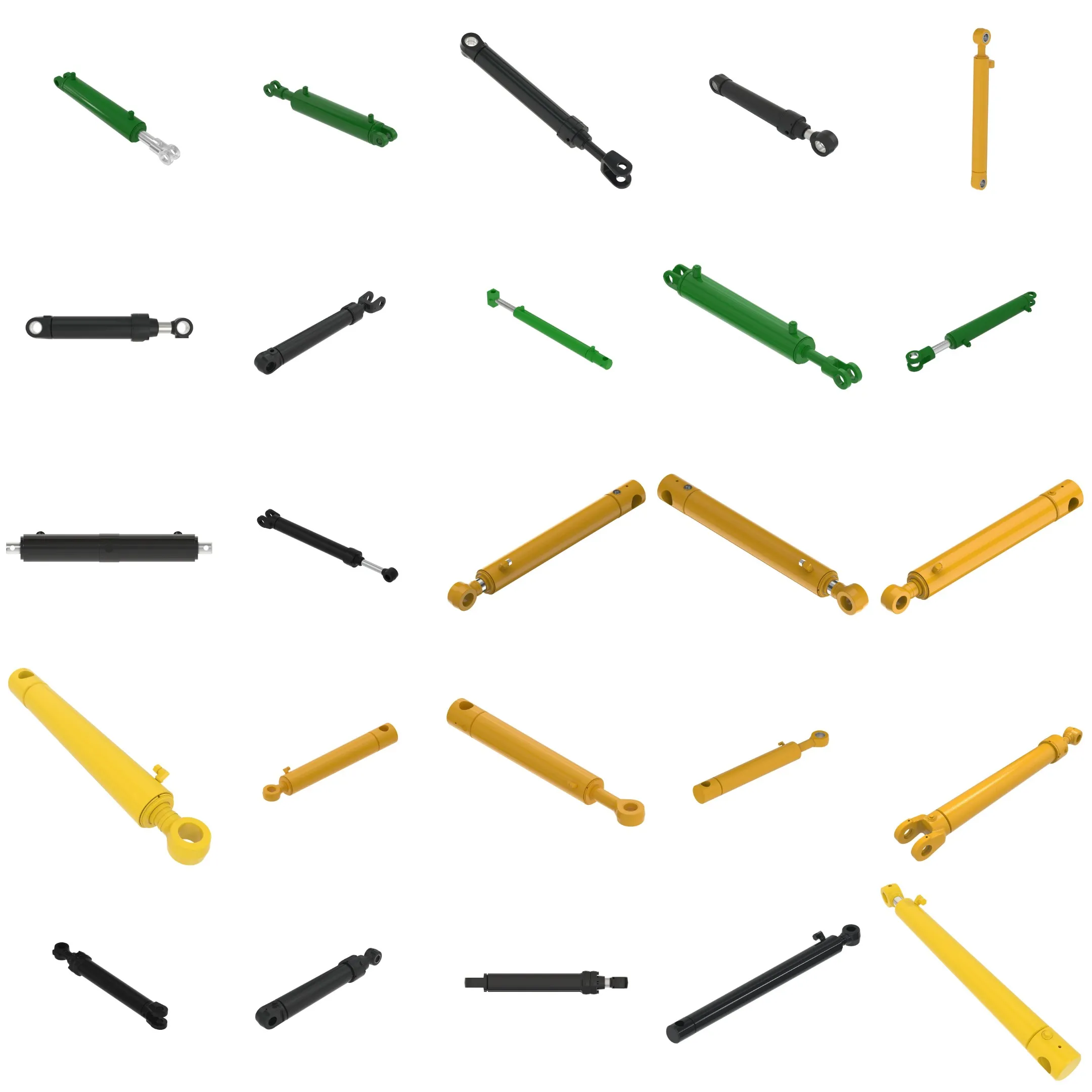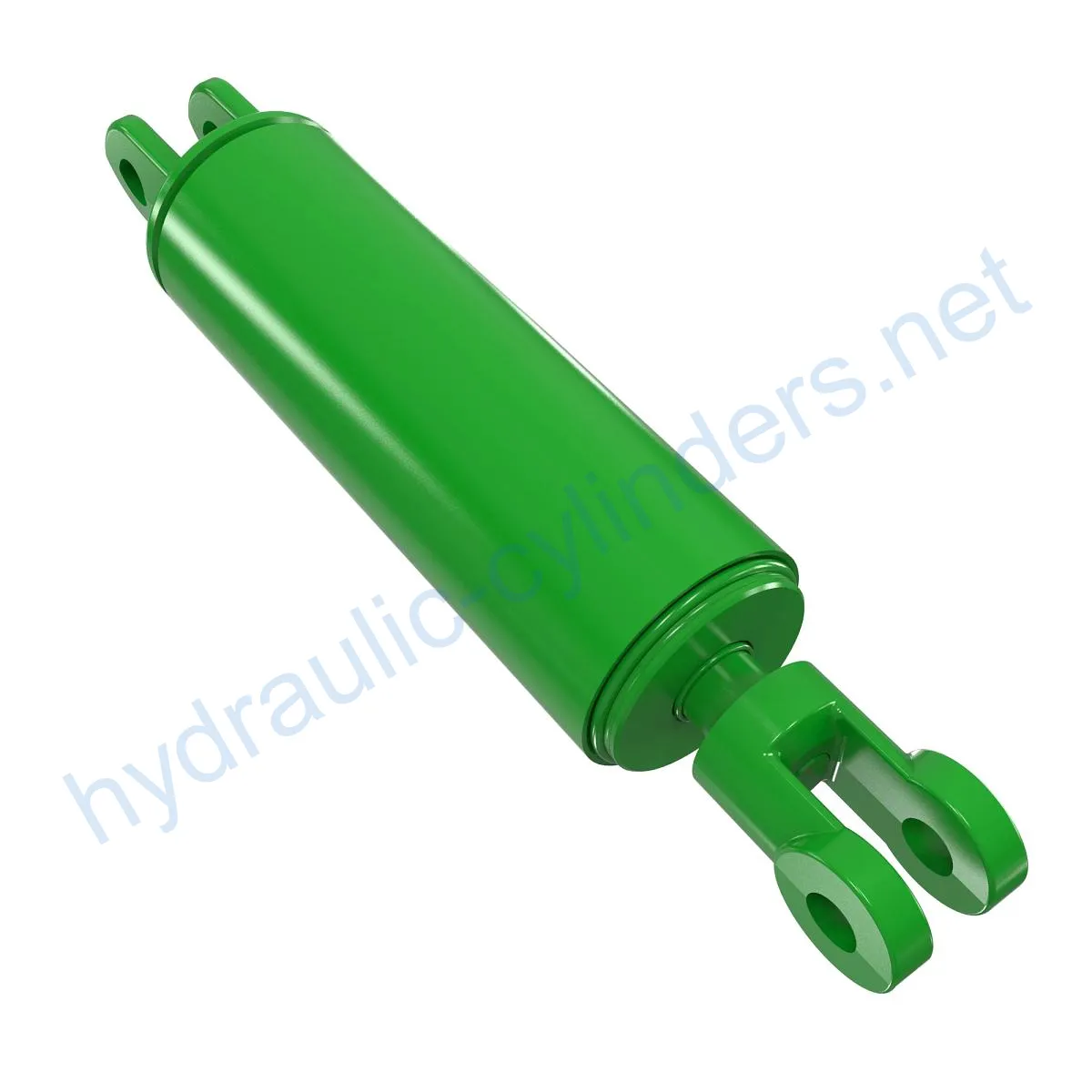Replacement Of AH212739 Depth Control Hydraulic Cylinder
Як один з виробників, постачальників та експортерів механічних виробів, ми пропонуємо гідравлічні циліндри та багато інших продуктів.
Будь ласка, зв'яжіться з нами для уточнення деталей.
Пошта:sales@hydraulic-cylinders.net
Виробник, постачальник, експортер гідравлічних циліндрів.
Replacement Of AH212739 Depth Control Hydraulic Cylinder
The Replacement Of AH212739 Depth Control Hydraulic Cylinder is a crucial component in hydraulic systems. This hydraulic cylinder is designed to control the depth of various equipment, ensuring precise and effective operation. By replacing damaged or worn hydraulic cylinders, equipment performance can be restored, guaranteeing optimal functionality in various applications.
Specifications
- Weight: 42.24 lb
- Height: 5 in
- Width: 6 in
- Length: 22.5 in
Model
The Replacement Of AH212739 Depth Control Hydraulic Cylinder is compatible with model 726.
Features
- Improved Equipment Performance: Replacing damaged or worn hydraulic cylinders can restore the equipment’s normal operating capabilities, ensuring optimal performance in various applications.
- Enhanced Safety: Regularly replacing hydraulic cylinders reduces safety hazards caused by cylinder failures, ensuring the safety of operators and equipment.
- Overload Protection: New cylinder designs often incorporate better overload protection mechanisms, enhancing overall safety.
- Quick Installation: Modern hydraulic cylinders are designed for easy installation and replacement, minimizing downtime.
- Standardized Components: Many hydraulic cylinders are standardized products, making it easier to obtain replacement parts in the market.
We specialize in the production of replacement hydraulic cylinders. Our products are perfect substitutes for these hydraulic cylinders, offering reliable performance and compatibility.
Applications
- Excavators: Hydraulic cylinders in excavator arms or buckets may become damaged due to prolonged use or overload, requiring replacement to restore proper operation.
- Cranes: Hydraulic cylinders in crane boom systems are susceptible to wear during frequent lifting and lowering processes, necessitating regular replacement to ensure safety.
- Tractors: Hydraulic cylinders in front-end loader attachments of tractors may develop leaks or performance degradation during continuous lifting and tilting operations, requiring replacement.
- Harvesters: Hydraulic cylinders in harvesters’ hydraulic systems endure high pressures during the harvesting process, and fatigue can lead to damage, necessitating timely replacement to maintain work efficiency.
- Automated Production Lines: Hydraulic cylinders are used to control robotic arms and other automated equipment. Cylinder failure can significantly impact production efficiency, requiring immediate replacement.
- Die-casting Machines: In high-pressure and high-temperature environments, hydraulic cylinders in die-casting machines may experience performance degradation. Regular replacement ensures product quality.
- Mining Equipment: Hydraulic cylinders are used for lifting and moving heavy loads in mining equipment. Due to harsh working conditions, regular inspections and replacements are necessary to avoid equipment failures.
- Bulldozers: Hydraulic cylinder wear on bulldozer blades can lead to a decrease in pushing power, requiring timely replacement to maintain operational efficiency.
Maintenance Tasks
- Regular Inspection: Conduct routine checks to identify any signs of wear, leaks, or damage in the hydraulic cylinder.
- Proper Lubrication: Ensure the hydraulic cylinder is adequately lubricated to reduce friction and extend its lifespan.
- Seal Replacement and Calibration Checks: Replace seals when necessary and perform calibration checks to maintain optimal performance.
During installation, it is essential to provide guidance on aligning the cylinder correctly. We recommend using appropriate installation brackets to secure the cylinder. We also offer inspection, repair, and replacement procedures, as well as parts replacement and rebuilding services to extend the lifespan of your hydraulic cylinder.
When working with hydraulic cylinders, safety measures are of utmost importance. Proper usage of the cylinders and adherence to safety protocols can prevent accidents and ensure a secure working environment.
Troubleshooting and Common Issues
- Leakage: If the hydraulic cylinder is experiencing leakage, it may indicate a damaged seal or worn-out components. Inspection and seal replacement are recommended.
- Slow Operation: Slow or sluggish operation can be a result of insufficient lubrication or internal blockages. Check and replenish the hydraulic fluid level and ensure proper lubrication.
- Erratic Movement: Erratic movement can signify issues with the hydraulic system, such as air in the lines or a malfunctioning control valve. System bleeding and valve maintenance may be necessary.
- Excessive Noise or Vibration: Unusual noise or vibration can indicate misalignment, worn-out components, or improper installation. Inspection and realignment may be required.
For troubleshooting hydraulic cylinder issues, it is recommended to follow the manufacturer’s guidelines and consult a professional if needed. Implementing preventive measures can minimize potential problems, ensuring smooth operation and prolonging the lifespan of the hydraulic cylinder.

Design Considerations and Selection Criteria
When selecting a hydraulic cylinder, several design considerations should be taken into account:
- Load-Bearing Capacity: Ensure the hydraulic cylinder can handle the specific load requirements of the equipment.
- Sealing Effectiveness: Opt for seals made of wear-resistant materials like polyurethane or nitrile rubber to ensure effective sealing.
- Durability: Choose cylinders with finely treated cylinder bodies and threaded ends to enhance wear resistance.
- Safety: Prioritize cylinders with built-in safety features, such as overload protection mechanisms.
- Maintainability: Consider cylinders that offer easy maintenance options, allowing for quick and convenient repair or replacement.
Sealing and Lubrication
For optimal performance and longevity, it is essential to utilize various sealing components such as piston seals and rod seals made of durable materials like polyurethane and nitrile rubber. The cylinder body and threaded ends should undergo fine treatment to enhance wear resistance. Regular lubrication with suitable hydraulic oil is necessary to ensure smooth operation and prevent excessive wear.
Regular Inspection and Preventive Maintenance
- Regularly inspect the hydraulic cylinder for signs of wear, leaks, or damage.
- Ensure proper installation, lubrication, and adjustment for optimal performance.
- Provide guidance on aligning the cylinder correctly during installation.
- Recommend using appropriate installation brackets to secure the cylinder properly.
- Offer recommended inspection, repair, and replacement procedures to extend the lifespan of the hydraulic cylinder.
- Provide tips and techniques to improve the durability of the hydraulic cylinder.

Logical organization, the use of subheadings for easy navigation, and the inclusion of relevant images or charts enhance reader comprehension. The content should be clear, concise, and suitable for readers with varying technical knowledge levels.
About Our Company
We are a leading manufacturer and wholesale distributor of hydraulic cylinders
Take a Tour of Our VR Factory:
Take a tour of our VR factory with the following
Hydraulic Cylinder Application:


